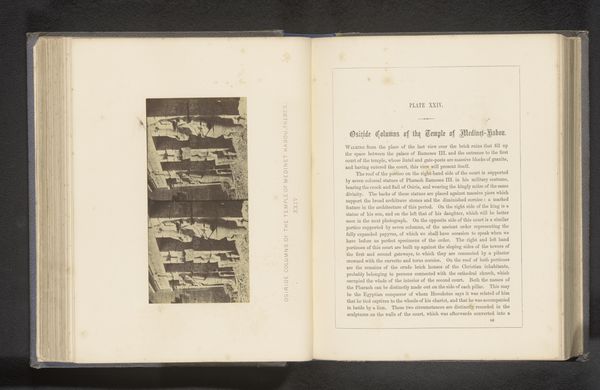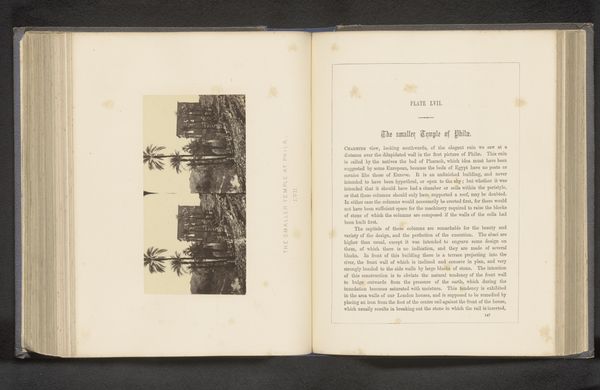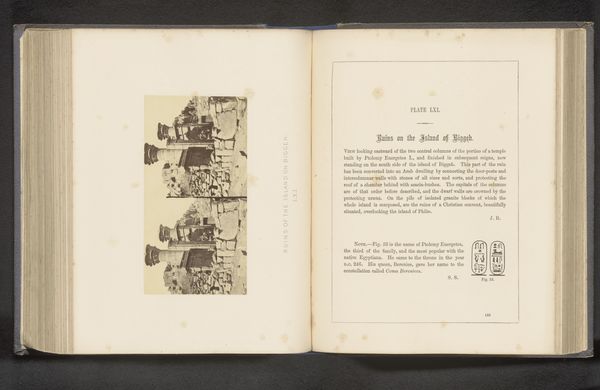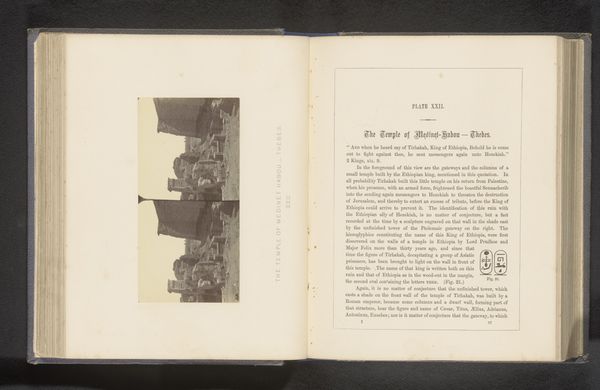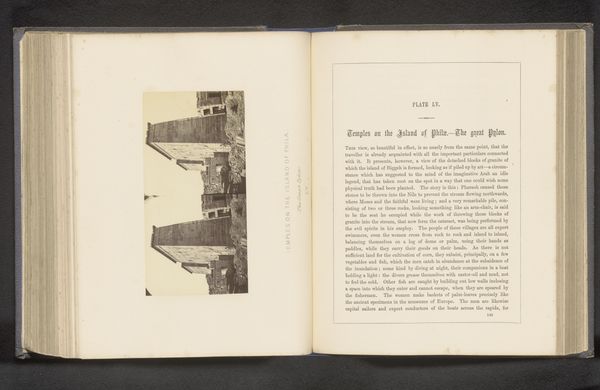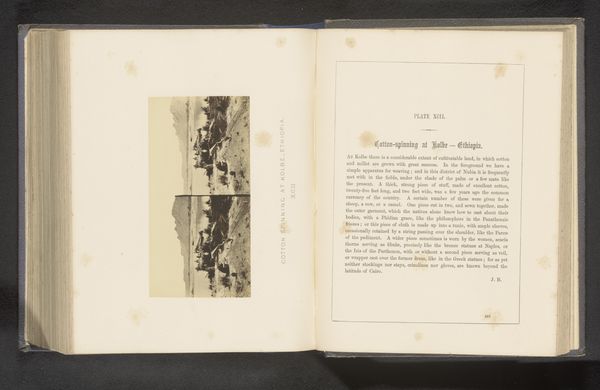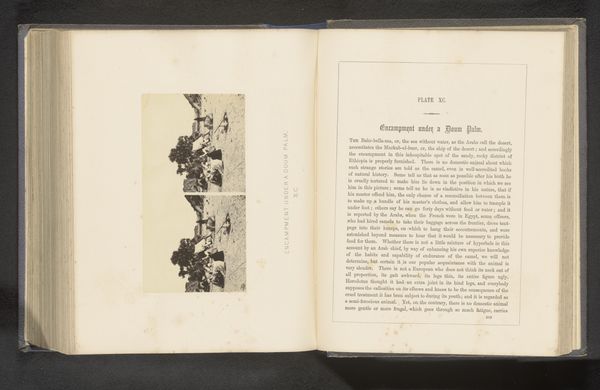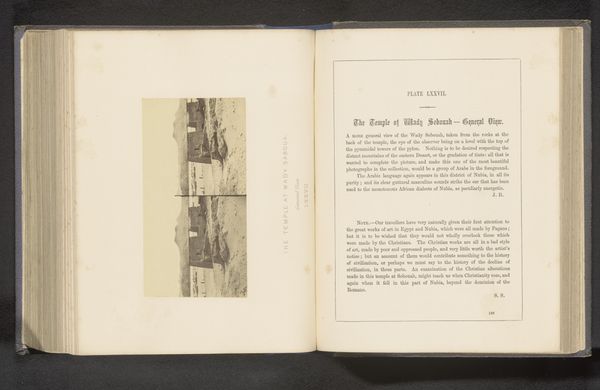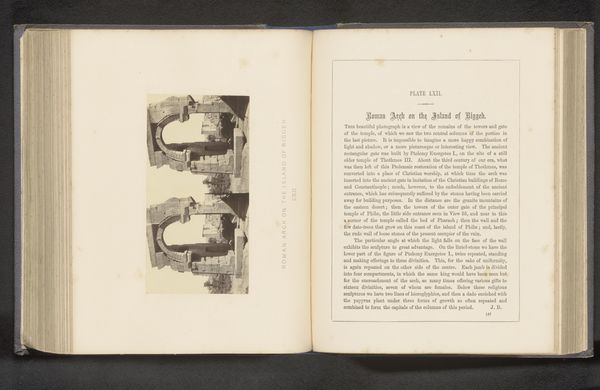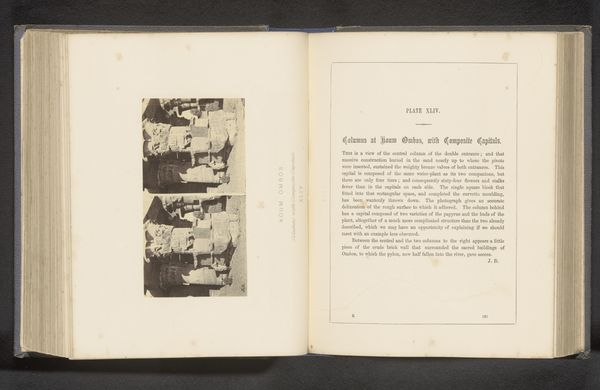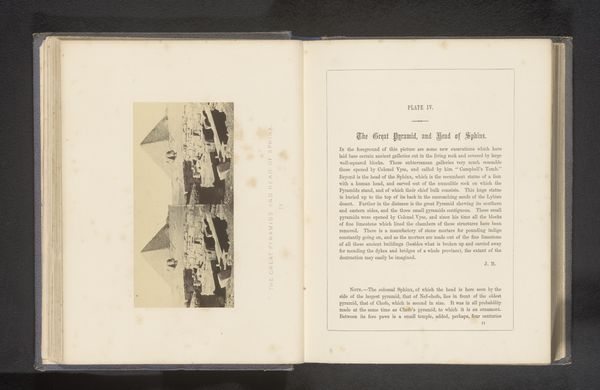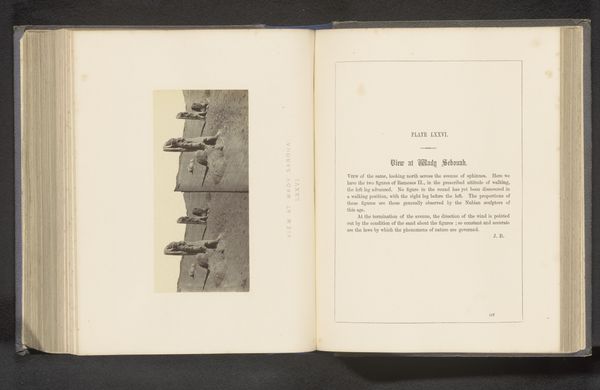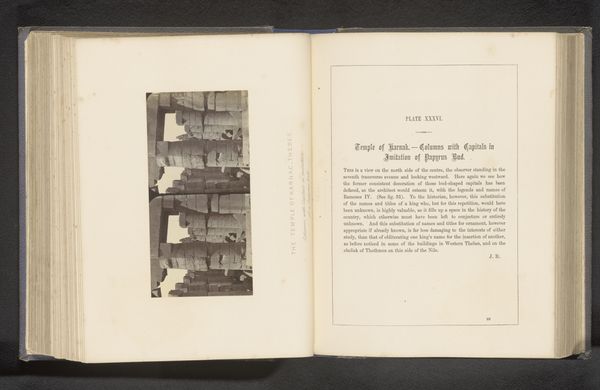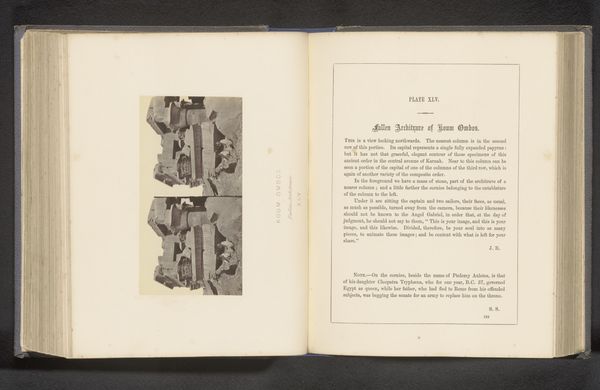
print, photography, site-specific, gelatin-silver-print
# print
#
landscape
#
ancient-egyptian-art
#
photography
#
ancient-mediterranean
#
site-specific
#
gelatin-silver-print
Dimensions: height 73 mm, width 145 mm
Copyright: Rijks Museum: Open Domain
This photograph by Francis Frith captures the ruins of the temple complex at Karnak, revealing monumental granite blocks adorned with ancient Egyptian symbols. The papyrus and lotus motifs, decorating the columns, speak of creation and rebirth, deeply embedded in the religious beliefs of the time. These symbols, potent in their original context, echo through history. The lotus, for instance, reappears in various forms across cultures, from the Far East to Europe, each time carrying nuances of purity, enlightenment, or divine birth. Consider the swastika, a cross-like symbol used by the Nazi Party. A sacred symbol in Hinduism and Buddhism, it represents well-being, luck, and cosmic order. The Nazis appropriated it, turning it into a symbol of hate and destruction. The ruins at Karnak evoke feelings of awe, perhaps even a kind of primordial dread, as we confront the remnants of a civilization both grand and distant. These feelings are held in our collective memory, where the symbols of Karnak have transformed, reappearing in new contexts.
Comments
No comments
Be the first to comment and join the conversation on the ultimate creative platform.
